#panamensis
Explore tagged Tumblr posts
Text

February 24, 2025 - Panama Flycatcher (Myiarchus panamensis) Found in parts of Costa Rica, Panama, Venezuela, Colombia, and Ecuador, these tyrant flycatchers live in forests, scrub, and cultivated areas, sometimes near water. They eat insects and fruit, often capturing their prey in short flights. Breeding from late March to June or July, they nest in cavities, lining them with rootlets, vines, leaf fragments, plant down, hair, and snakeskin. Females lay clutches of two or three eggs.
#panama flycatcher#tyrant flycatcher#myiarchus panamensis#bird#birds#illustration#art#water#birblr art
45 notes
·
View notes
Text
Crescent Octopus

https://www.inaturalist.org/taxa/699760-Euaxoctopus-panamensis
5 notes
·
View notes
Text
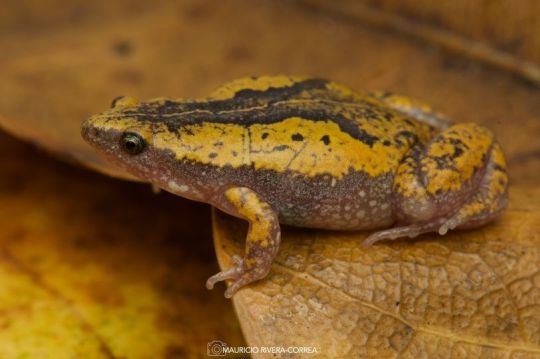
Panama Humming Frog (Elachistocleis panamensis), family Microhylidae, Municipio de La Paz, Cesar, Colombia
Photograph by Mauricio Rivera-Correa
#humming frog#narrowmouth#elachistochleis#microhylidae#frog#amphibian#herpetology#animals#nature#south america
391 notes
·
View notes
Text
The Prolific, Mother of Thousands and Mother of Millions
Kalanchoes are succulent plants that originate from Asia and Africa, but many species are now considered invasive elsewhere. They grow in arid climates which means that they are adapted to drought and heat. Many of the species proliferate prolifically through growing plantlets along the leaves. The species that tend to grow plantlets don't rely on seeds for reproduction and may even be sterile. The species that don't grow plantlets or grow few of them rely more on seeds for reproduction. Many Kalanchoe species are also monocarpic, which means that they die after flowering. I personally grow Kalanchoe panamensis, Kalanchoe laetivirens, and Kalanchoe x houghtonii. All three have been easy-to-grow plants that thrive on neglect. I received the Kalanchoe laetivirens and Kalanchoe x houghtonii at a local plant swap last fall. I have given multiple starts away of those two as they proliferate so quickly.


2 notes
·
View notes
Text
Bluey Vuitton mushroom strain
Have you heard of Bluey Vuitton? 🍄💙
This isn’t your average mushroom—it’s a designer strain that’s 3x stronger than Golden Teacher, with a story that blends science, chance, and art. Let me tell you why this hybrid is making waves in mycology. 🧵👇
1️⃣ Bluey Vuitton is the lovechild of two legendary strains: Psilocybe panamensis (a classic) & Melmac Penis Envy (super potent). Combining their strengths made this hybrid a standout.
2️⃣ It all started in 2014 when a mycologist named "Silly Cybin" stumbled upon rare spores on a beach in California. A chance encounter at a falafel shop added the final ingredient.
3️⃣ With cutting-edge genetic techniques, these strains were hybridized, creating a mushroom that’s not just potent but visually stunning—think blue hues & albino traits.
4️⃣ Bluey Vuitton isn’t just about looks or strength. It’s a pioneer in therapeutic potential too. Researchers are studying psilocybin for its ability to treat depression, PTSD, & anxiety.
5️⃣ Cultivating Bluey Vuitton is surprisingly beginner-friendly. It thrives in nutrient-rich substrates, warm temps, & humid conditions. 🌡️🍄
6️⃣ But here’s the twist: It’s named after Louis Vuitton! Why? The mushroom world is embracing pop-culture-inspired names, making psychedelics more relatable & memorable.
7️⃣ The legal landscape of psychedelics is changing fast. While psilocybin is still illegal in many places, decriminalization efforts in cities like Denver & Oakland are paving the way for acceptance.
8️⃣ The future is bright for strains like Bluey Vuitton. Imagine a world where designer mushrooms aren’t just for recreation but prescribed for healing & growth.

1 note
·
View note
Text
Truffa internazionale ed evasione fiscale nuovo arresto per il faccendiere Oliverio
In manette con altre 9 persone l’uomo che aveva un archivio su personaggi pubblici, politici, militari. Amico di alti prelati, lavorava per i Servizi. Tasse non pagate per 500 milioni
La Guardia di Finanza di Roma ha arrestato 9 persone con l’accusa di reati fiscali e fallimentari. Tra queste figura anche il «faccendiere» Paolo Oliverio, noto come il fiscalista di molti personaggi potenti, già finito in manette nel novembre 2013 per un’inchiesta sugli affari dell’Ordine religioso dei Camilliani. Oliverio, come avevano svelato gli inquirenti, è un commercialista che frequentava uomini d’affari, politici, imprenditori, ma anche alti prelati e militari della stessa Guardia di Finanza. Nel suo archivio, centinaia di schede con dati sensibili su personaggi noti, politici, manager, alti prelati e militari: l’uomo era stato per due anni un collaboratore dei servizi segreti, ingaggiato dall’Aisi, l’agenzia per la sicurezza interna, all’epoca diretta dal generale Giorgio Piccirillo.
FALSE FATTURE E CONTI ESTERI - Con Oliverio, le Fiamme Gialle hanno fermato anche un altro commercialista: gli arresti sono stati eseguiti nell’ambito dell’operazione «Ermitage», una vicenda di truffe internazionali con evasione fiscale e bancarotta fraudolenta che ha portato al sequestro di beni per 154 milioni di euro a carico di 13 persone. Le indagini hanno consentito anche di individuare un imponibile evaso per circa 1 miliardo di euro, attraverso l’emissione ed utilizzo di false fatture per oltre 1 miliardo e 300 milioni di euro. Ben 79 le persone denunciate, 82 le imprese coinvolte: tra queste, alcune aggiudicatarie di appalti con la Pubblica amministrazione. I finanzieri hanno scoperto milioni di euro transitati su conti correnti svizzeri e monegaschi intestati a società panamensi.

Paolo Oliverio
APPALTI PUBBLICI E FONDI UE - Gli ulteriori sviluppi investigativi hanno accertato responsabilità penali di 46 persone fisiche e di altre 50 società che risultano aver beneficiato del sistema di false fatture: tra queste, 12 società vincitrici di appalti pubblici, società beneficiarie di finanziamenti comunitari, importanti imprese leader nel settore informatico. I reati ipotizzati a carico dei 79 denunciati - tra cui 5 titolari di studi commercialisti - vanno dall’emissione ed utilizzo di fatture false all’occultamento di scritture contabili, all’omessa dichiarazione dei redditi ed Iva (con l’aggravante della transnazionalità), alla sottrazione fraudolenta al pagamento di imposte, al millantato credito, al riciclaggio, alla bancarotta fraudolenta patrimoniale.
DA PANAMA A LUSSEMBURGO - Nei confronti di 11 soggetti è contestata pure l’associazione a delinquere. Nel complesso, le 82 società coinvolte (di cui 3 inglesi, 1 lussemburghese e 4 panamensi) hanno sottratto al fisco materia imponibile ad oggi stimata in oltre 1 miliardo di euro, con un’effettiva evasione d’imposta, ai fini imposte dirette e dell’Iva, quantificata in circa 500 milioni di euro, negli anni dal 2006 al 2013.
0 notes
Text




164) Crypturellus soui; Kusacz czarnogłowy, little tinamou (kusacz mały) - gatunek średniej wielkości ptaka z rodziny kusaczy (Tinamidae), zamieszkujący Meksyk, Amerykę Centralną i Południową. Nie jest zagrożony wyginięciem. Kusacz czarnogłowy zamieszkuje w zależności od podgatunku:
Crypturellus soui meserythrus – od południowego Meksyku po południowo-wschodnią Nikaraguę
Crypturellus soui modestus – Kostaryka i zachodnia Panama
Crypturellus soui capnodes – północno-zachodnia Panama
Crypturellus soui poliocephalus – zachodnia i środkowa Panama
Crypturellus soui panamensis – środkowa i wschodnia Panama
Crypturellus soui mustelinus – północno-wschodnia Kolumbia, północno-zachodnia Wenezuela
Crypturellus soui soui – od wschodniej Kolumbii po region Gujana i północno-wschodnią Brazylię
Crypturellus soui andrei – Trynidad i północno-wschodnia Wenezuela
Crypturellus soui caucae – północno-środkowa Kolumbia
Crypturellus soui harterti – zachodnia Kolumbia i zachodni Ekwador
Crypturellus soui caquetae – południowo-wschodnia Kolumbia
Crypturellus soui nigriceps – wschodni Ekwador i północno-wschodnie Peru
Crypturellus soui albigularis – północna i wschodnia Brazylia
Crypturellus soui inconspicuus – środkowe Peru po wschodnią Boliwię.
Habitatem kusacza czarnogłowego są wilgotne lasy położone na dużej wysokości (około 2000 m n.p.m.), jak również inne wilgotne, wysoko położone siedliska w Centralnej i Południowej Ameryce, aż po południową Brazylię. Występuje na terenach od południowego Meksyku, przez Panamę po Amerykę Południową – Kolumbię, Wenezuelę, Gujanę, Surinam, Gujanę Francuską, Ekwador, Peru, północną Boliwię i większą część Brazylii. Kusacz czarnogłowy jest rzadko widziany w ciemnych, gęstych lasach. Może być lokalizowany przez swoje rozwlekłe, podobne do gwizdu wołania (delikatne, opadające, ciche rżenie; również cykl pojedynczych nut, tempo wzrastające na końcu), wykonywane przez obie płcie.
Przez IUCN gatunek klasyfikowany jest jako najmniejszej troski (LC, Least Concern). W 2008 roku organizacja Partners in Flight szacowała, że liczebność światowej populacji mieści się w przedziale 0,5–5,0 milionów osobników. Globalny trend liczebności oceniany jest jako spadkowy ze względu na wylesianie i polowania.
0 notes
Text
Tomba di un signore di 1.200 anni carica d'oro portata alla luce a Panama Tomba Preispanica Risalente a 1.200 Anni Scoperta a Panama Archeologi panamensi hanno rinvenuto una tomba risalente a 1.200 anni appartenente a nobili preispanici, contenente una notevole quantità di oro. La scoperta è avvenuta a El Caño, parco archeologico nella provincia di Coclé, Panama, e si riferisce alla sepoltura di un importante signore della zona, secondo quanto dichiarato dal Ministero della Cultura del Paese. Dettagli sulla Sepoltura L’individuo sepolto, presumibilmente vissuto alla fine del 700, sarebbe stato un uomo di circa 30 anni al momento della morte, come riportato dalla Fondazione El Caño. La tomba era riccamente dotata di manufatti funerari,
0 notes
Text
Leonardo DiCaprio si schiera contro la grande miniera di Panama
AGI – L’attore e ambientalista statunitense Leonardo DiCaprio ha deciso di appoggiare la lotta dei cittadini panamensi contro l’attività di una grande miniera di rame, epicentro di una crisi nazionale che è costata la vita a quattro persone e sta causando perdite milionarie nel Paese. La star di Hollywood ha ripubblicato sul suo account Instagram un post dell’organizzazione Re:Wild, che mostra un…
View On WordPress
0 notes
Text
Species: South American Canids (Speothos, Chrysocyon, Lycalopex, Cerdocyon, Atelocynus)
This series focuses on helping people choose interesting species for their fursona through informing them of the many, often overlooked, species out there! This post is about South American canids, including false foxes.
──── ◉ ────
Bush Dog (Speothos venaticus)

The bush dog has 3 subspecies:
South American Bush Dog (Speothos venaticus venaticus)
Panamian Bush Dog (Speothos venaticus panamensis)
Southern Bush Dog (Speothos venaticus wingei)
It is oddly hard to find pics of the different subspecies, sorry
Size: 20-30cm (8-12in) height (at shoulder), 57-75cm (22-30in) lenght, 12-15cm (5-6in) tail lenght, 5-8kg (11-18lbs) weight
Diet: carnivorous, preys on large rodents
Habitat: lowland forests, wet savannahs, open pastures
Range:
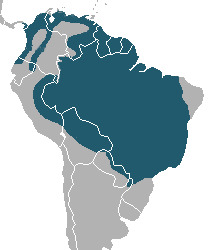
Status: near threatened
──── ◉ ────
Maned Wolf (Chrysocyon brachyurus)

Size: 90cm (35in) height (at shoulder), 100cm (39in) lenght, 45cm (18in) tail lenght, 23kg (51lbs) weight
Diet: omnivorous, preys on small/medium mammals, birds, fish; eats fruit, tubers, sugarcane, other plants
Habitat: savannahs
Range:
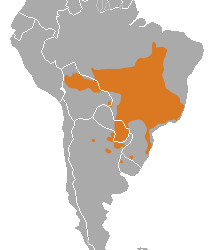
Status: near threatened
──── ◉ ────
Hoary Fox (Lycalopex vetulus)

Size: 58-72cm (23-28in) lenght, 25-36cm (9-14in) tail lenght, 3-4kg (6-8lbs) weight
Diet: omnivorous, preys on invertebrates, rodents, birds; eats fruit
Habitat: woodlands, bushlands, savannahs
Range:

Status: near threatened
──── ◉ ────
Sechuran Fox (Lycalopex sechurae)

Size: 50-78cm (20-31in) lenght, 27-34cm (11-13in) tail lenght, 2.6-4.2kg (5.7-9.3lbs) weight
Diet: omnivorous, varied. Preys on invertebrates, rodents; eats carrion, fruit, seed pods
Habitat: deserts, dry forests, beaches
Range:
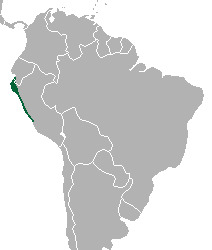
Status: near threatened
──── ◉ ────
Darwin's Fox (Lycalopex fulvipes)
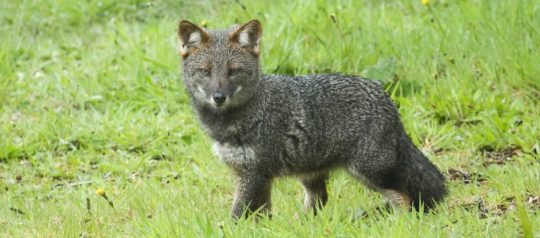
Size: 48-59cm (19-23in) lenght, 17-25cm (7-10in) tail lenght, 1.8-3.9kg (4-8.7lbs) weight
Diet: omnivorous, preys on invertebrates, small mammals, reptiles; eats fruit
Habitat: southern temperate rainforests
Range:
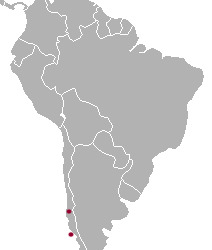
Status: endangered
──── ◉ ────
Pampas Fox (Lycalopex gymnocercus)

Size: 51-80cm (20-31in) lenght, 2.4-8kg (5.3-17.6lbs) weight
Diet: omnivorous, preys on birds, small mammals, invertebrates; eats carrion, fruit
Habitat: montane forests, dry scrublands, wetlands
Range:

Status: least concern
Please note! The pampas fox has 3 subspecies!
──── ◉ ────
South American Grey Fox (Lycalopex griseus)

Size: 65-110cm (26-43in) lenght including 20-43cm (8-17in) tail lenght, 2.5-5.4kg (5.5-12lbs) weight
Diet: omnivorous, preys on small mammals, birds, reptiles, invertebrates; eats carrion, fruit
Habitat: varied; scrublands, steppes, forests
Range:

Status: least concern
──── ◉ ────
Culpeo (Lycalopex culpaeus)

Size: 95-132cm (37-52in) lenght including 32-44cm (13-17in) tail lenght, 5-13.5kg (11-30lbs) weight
Diet: carnivorous, preys on lagomorphs, small mammals
Habitat: varied; temperate rainforests, forests, scrublands, deserts
Range:

Status: least concern
Please note! The culpeo has 5 subspecies!
──── ◉ ────
Crab-Eating Fox (Cerdocyon thous)
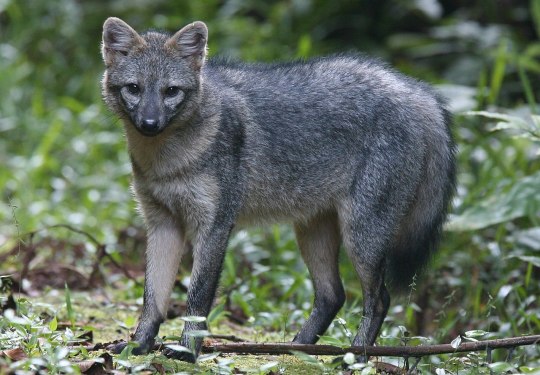
Size: 64cm (25in) lenght, 28cm (11in) tail lenght, 4.5-7.7kg (10-17lbs) weight
Diet: omnivorous, preys on crabs, small mammals, birds, crustaceans, invertebrates, reptiles; eats carrion, fruit
Habitat: savannahs, woodlands, subtropical forests, shrublands
Range:

Status: least concern
Please note! The crab-eating fox has 5 subspecies!
──── ◉ ────
Short-Eared Dog (Atelocynus microtis)
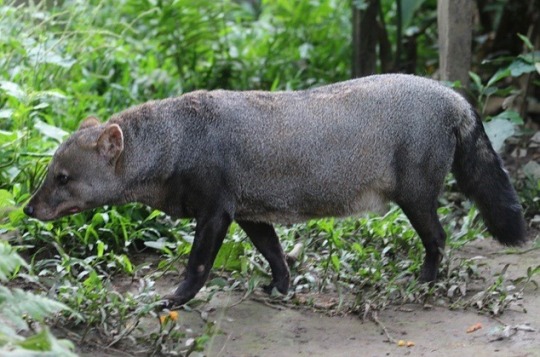
Size: 72-100cm (28-39in) lenght, 9-10kg (19-22lbs) weight
Diet: mostly carnivorous, preys on fish, invertebrates, small mammals, birds; eats fruit
Habitat: rainforests, lowland forests, swamp forests, cloud forests
Range:
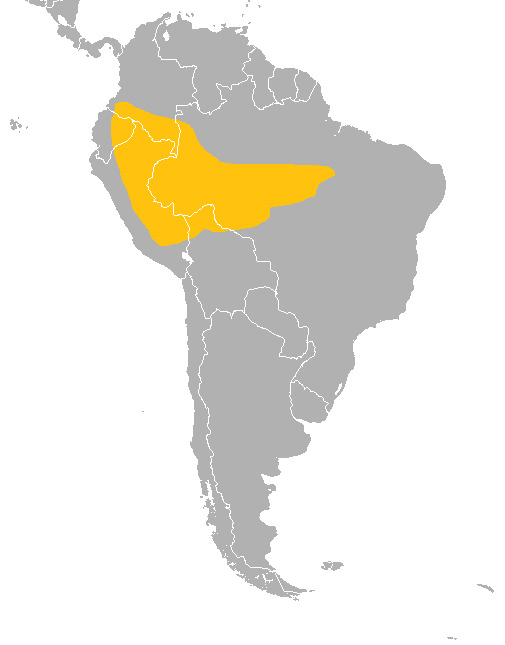
Status: near threatened
Please note! The short-eared dog has 2 subspecies!
──── ◉ ────
#fursona resources#furry#fursona#species#canidae#canine#speothos#chrysocyon#lycalopex#cerdocyon#atelocynus#bush dog#maned wolf#fox#foxes#false foxes#hoary fox#sechuran fox#darwin's fox#pampas fox#south american grey fox#culpeo#crab-eating fox#short-eared dog
7 notes
·
View notes
Text


Panamanian Dwarf Boa (Ungaliophis panamensis), family Boidae, Costa Rica
This small member of the Boa family only grows to a length of 50 cm (20 inches).
photograph by Pavel Kirillov
233 notes
·
View notes
Photo

Una madre si ferma per indossare calze e scarpe asciutte dopo aver attraversato un fiume nel Darien Gap in rotta verso gli Stati Uniti il 07 ottobre 2021 vicino ad Acandi, in Colombia. Il passaggio attraverso la fitta foresta pluviale è considerato il tratto più pericoloso per i migranti che viaggiano dal Sud America agli Stati Uniti. Durante il viaggio, acquazzoni torrenziali portano a improvvise inondazioni del fiume, che spesso causano annegamenti di migranti lungo il percorso. Le segnalazioni di rapine e stupri sono comuni, soprattutto dopo che i migranti hanno attraversato il remoto valico di frontiera di montagna dalla Colombia a Panama. Secondo le autorità panamensi, quest'anno oltre 70.000 migranti hanno attraversato il Darien Gap. La maggior parte dei migranti negli ultimi mesi erano haitiani, molti dei quali vivevano in Cile e Brasile dal terremoto di Haiti del 2010. Il Darien Gap è il tratto di foresta pluviale di 66 miglia tra il Nord e il Sud America, dove la Panamerican Highway non è mai stata completata a causa del terreno accidentato, dei costi enormi e di una miriade di problemi ambientali. Foto di John Moore
4 notes
·
View notes
Text
New cyanobacteria species spotlights early life
https://sciencespies.com/nature/new-cyanobacteria-species-spotlights-early-life/
New cyanobacteria species spotlights early life
Cyanobacteria are one of the unsung heroes of life on Earth. They first evolved to perform photosynthesis about 2.4 billion years ago, pumping tons of oxygen into the atmosphere — a period known as the Great Oxygenation Event — which enabled the evolution of multicellular life forms.
Led by BTI faculty member Fay-Wei Li, researchers have discovered a new species of cyanobacteria, Anthocerotibacter panamensis, which could help illuminate how photosynthesis evolved to create the world as we know it. The work was published in Current Biology on May 13.
“We never intended to discover a new species,” said Li. “It was a total accident.”
His lab was working on a project to isolate cyanobacteria from hornwort plants, and noticed something weird in a sample from a rainforest in Panama. The researchers sequenced the cyanobacterium’s DNA, and found that it belonged to a group called Gloeobacteria, which is extremely rare.
“Prior to this discovery, only two species of Gloeobacteria had been isolated,” Li said. “There is also a third group of uncultured species from the Arctic and Antarctic regions, but no one knows how many species are in that group.”
Gloeobacteria diverged from the more commonly studied Phycobacteria about 2 billion years ago. The two groups have many differences, and A. panamensis shares some traits with each.
Similar to other Gloeobacteria, the new species lacks thylakoids — the membrane-bound compartments that are the site of the light-dependent reactions of photosynthesis in Phycobacteria and plants.
“Now we can be pretty sure that the thylakoid evolved in Phycobacteria,” Li said.
On the other hand, A. panamensis makes carotenoids — a group of compounds that help protect an organism from sun damage — in a fashion similar to Phycobacteria and plants, but different from the other Gloeobacteria.
“These results suggest that this particular carotenoid biosynthesis pathway evolved in the ancestor of all cyanobacteria, and then was lost in some Gloeobacteria,” said Li.
Li said one of the more interesting findings is that A. panamensis has very few genes that encode the proteins that perform light-dependent reactions. The researchers found that the new species could still perform photosynthesis, but very slowly, which could be of interest to synthetic biologists.
“If you want to build a complete set of photosynthetic machinery with the fewest necessary components, then this species could inform how to do that,” said Li. “Anthocerotibacter has a minimal set of photosystem subunits, but it still functions.”
Story Source:
Materials provided by Boyce Thompson Institute. Original written by Aaron J. Bouchie. Note: Content may be edited for style and length.
#Nature
1 note
·
View note
Photo

Orecchini Panamensi 800 d.C. Riproduzione storia officinadeldiavolo.blogspot.com Quest'estate l'@officinadeldiavolo si è presa tre mesi di vacanza, i gioielli che produciamo vengono realizzati sulla base di scrupolose ricerche storiche, non ci accontentiamo di riprodurre semplicemente il singolo pezzo, lo realizziamo con le stesse tecniche di una volta ed è proprio la lavorazione che ci distingue da qualsiasi altro orafo. #officinadeldiavolo #gioiellimodernianimaantica #gioiellistorici #oreficeriastorica https://www.instagram.com/p/CFrT0LcCkrC/?igshid=1cfynfrig3f9x
3 notes
·
View notes
Photo

Pleurothallis grobyi Bateman ex Lindl. 1835 SUBGENUS Specklinia SECTION Hymenodanthae SUBSECTION Longicaulae [Barb. Rodr.] Luer 1986 Humboldtia crepidophylla (Rchb.f.) Kuntze 1891; Humboldtia grobyi (Bateman ex Lindl.) Kuntze 1891; Humboldtia trilineata (Barb.Rodr.) Kuntze 1891; Humboltia crepidophylla (Rchb. f.) Kuntze 1891; Humboltia grobyi (Bateman ex Lindl.) Kuntze 1891; Humboldtia marginalis (Rchb. f.) Kuntze 1891; Lepanthes marmorata Barb.Rodr. 1881; Lepanthes trilineata (Barb.Rodr.) Barb.Rodr 1881; Pabstiella ezechiasi (Hoehne) Luer 2007; Pleurothallis arevaloi Schltr. 1924; Pleurothallis barbosae Schltr. 1921; Pleurothallis biglandulosa Schltr. 1922; Pleurothallis choconiana S. Wats. 1888; Pleurothallis crepidophylla Rchb. f. 1878; Pleurothallis ezechiasi Hoehne 1946; Pleurothallis grobyi var. marmorata (Barb.Rodr.) Garay 1951; Pleurothallis grobyi var. trilineata (Barb.Rodr.) Cogn. 1896; Pleurothallis lindleyana Cogn. 1896; Pleurothallis marginalis Rchb. f. 1855; Pleurothallis marginata (Rich.)Cogn 1896; Pleurothallis marmorata (Barb.Rodr.) Cogn. 1896; Pleurothallis marmorata var. concolor Cogn. 1906; Pleurothallis panamensis Schltr. 1921; Pleurothallis pergracilis Rolfe 1893; Pleurothallis perplexa Rchb.f. 1860; Pleurothallis surinamensis H.Focke 1849; Pleurothallis trilineata Barb.Rodr. 1877; Specklinia biglandulosa (Schltr.) Pridgeon & M.W.Chase 2001; Specklinia ezechiasi (Hoehne) Luer 2004; Specklinia grobyi (Bateman ex Lindl.) F. Barros 1984; Specklinia marginalis (Rchb.f.) F.Barros 1983 publ. 1984 #flowers #flower #plants #blossom #botanical #floral #bloom #orchidee #orcidea #orquideas #orquidea #orkide #orchideen #orchidstagram #orchidworld #orchids #orchidspecies #orchidea #orchid #rareorchids #greenhouse #bloomingnow #flowerstagram #flowersofinstagram #flowerphoto #orchidaddict #orchidcollection #orchidflower #instaorchid #orchidsofinstagram https://instagr.am/p/CIiMhn0gHN1/
1 note
·
View note
